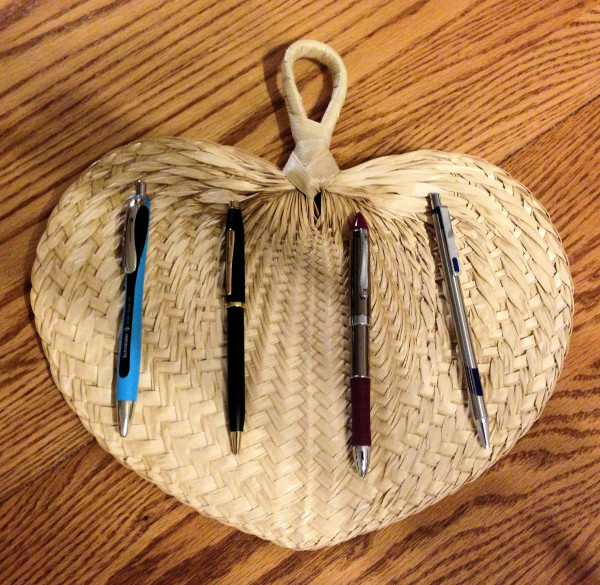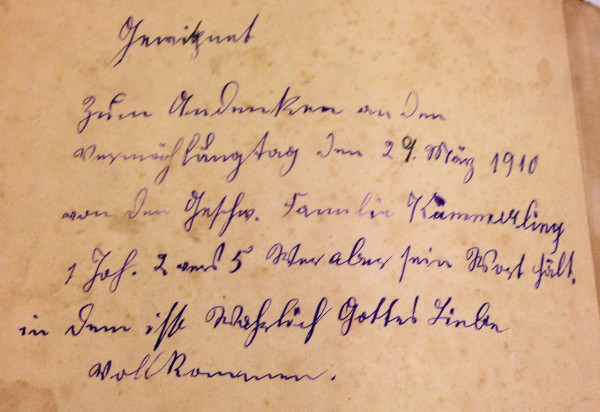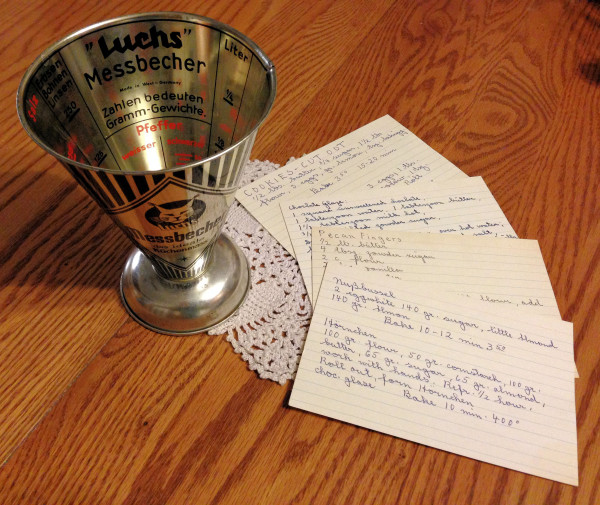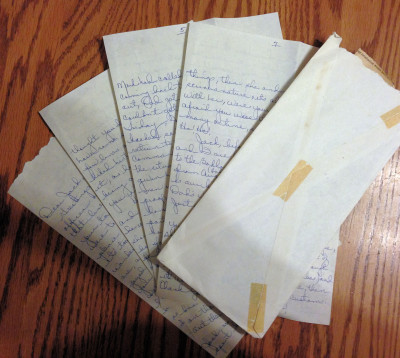I have a love affair with pens. Despite the fact that I use a keyboard more than I write longhand, the look and feel of my writing implements are important to me. How smoothly the tip glides over paper, the size of the pen tip, the grip of the pen and its weight, and the appearance of the ink are important factors to the pleasure I experience when I write. And you don’t always have to spend a lot of money to find a pen that’s just right for you, that makes you want to open up your journal and scribble away.

Pens are often associated with recognition. My husband has a collection of Cross pens he received as awards for various career achievements. President Obama follows the tradition of many other U.S. presidents when he signs bills; he has used as many as 22 pens to sign a document, with each pen being gifted to someone who played a role in the legislation. National Public Radio (NPR) interviewed Jim Kratsas, Deputy Director of the Gerald R. Ford Museum, about the practice in A History of the Presidential Signing Pen. Kratsas reports that signing documents with multiple pens has been going on since President Truman.
“Well, it was my understanding,” he says, “that Harry Truman was the first one to have a box of pens, kind of like giveaways. And it was actually started by somebody who sent President Truman a box of pens that said, ‘I swiped this from Harry Truman’s desk.’ But the tradition has been, ever since then, that each president that comes into office, they get multiple boxes of these pens.”
In a world where keyboards and touch screens proliferate, you might think that pens are becoming relics of the past. Certainly there are signs everywhere that people seldom take pens to paper to jot down notes, write letters or take meeting minutes. I’m guilty myself, as I type reminders in my iPhone’s Notes and Reminders apps. The few letters I write are signed with a pen, but composed on a laptop. And during the 12 years I was a Board member of Students for a Creative Iowa, I observed that fellow Board members gradually moved away from note-taking on lined legal pads to typing on a laptop or electronic tablet. In today’s schools, Common Core Standards dominate the curriculum, emphasizing keyboard proficiency over cursive writing skills. Many school districts, according to Cory Turner of National Public Radio (NPR)’s “All Things Considered,” have already dropped cursive handwriting from the curriculum.
“The new Common Core State Standards now being implemented in most states never mention the word ‘cursive,'” writes Turner in Does The Fight For A Cursive Comeback Miss The Point?
While many people maintain the loss of handwriting really doesn’t matter, others point to the importance of handwriting for cultural and heritage reasons, citing the necessity of being able to read older relatives’ letters, notes, and journals. I do think there is some validity to this argument. When my father grew up in World War II Germany, he learned to read and write the handwriting of his parents, Sütterlinschrift, where spindly letters and sharp slashes bear little resemblance to the Palmer method I learned as a child. You can see a sample of this handwriting in my mother’s family Bible. She, too, grew up in Germany.
Another argument in favor of the importance of handwriting is one that points to how the brain develops as a result of learning how to form your letters.
“The more variety of things you do in the fine motor domain, the more variety of hand movements you make, will improve your dexterity,” says Professor Amy Bastian, a motor neuroscientist at the Kennedy Krieger Institute at Johns Hopkins University in Baltimore, Maryland, who was interviewed by Turner.
She points out, however, that it really doesn’t matter whether children are taught handwriting or printing.
Maria Konnikova in her New York Times post, What’s lost as handwriting fades, describes psychologists’ and neuroscientists’ belief that there is still much research that needs to be completed about how handwriting affects the brain. Among those she interviewed was Stanislas Dehaene, a psychologist at the Collège de France in Paris.
“When we write, a unique neural circuit is automatically activated,†says Dehaene. “There is a core recognition of the gesture in the written word, a sort of recognition by mental simulation in your brain.”
Two years ago in 2012, writes Konnikova, psychologist Karin James at Indiana University conducted an experiment in which children who had not yet learned how to read were given a letter or a shape and asked to reproduce it in one of three ways: by tracing it on paper with a dotted line, by drawing it on a blank sheet of paper, or typing it on a computer. Then the children were placed in a brain scanner and given the letter or shape again. Researchers discovered that when the children drew letters freehand, activity increased in three areas of the brain that are activated in adults when they read and write. The same was not true when the letter or shape was traced, or when it was typed on a computer. James says that we can prepare very young children for reading by having them freehand-draw the letters, and then these children eventually learn to read faster and better than those who trace letters, type letters or observe others drawing letters.
According to another study, Early development of language by hand: composing, reading, listening, and speaking connections; three letter-writing modes; and fast mapping in spelling, conducted by psychologist Virginia Berninger from the University of Washington and described by Konnikova, second through fifth graders demonstrated that there is distinct and different brain activity for printing, cursive writing, and typing on a keyboard, with different outcomes. When children were asked to generate ideas for a written composition, those with better handwriting showed greater brain activity in areas associated with working memory, and increased activity in the areas associated with reading and writing.
Berninger suggests that for various disabilities related to reading and writing, there are differences in the way that the brain processes cursive writing versus printing. In dysgraphia, for example, a condition where the ability to write is impaired (particularly after a brain injury), a person’s ability to write cursively is sometimes retained, and printing is not—or exactly the opposite. In alexia, or impaired reading ability, the same is true.
Konnikova spoke with psychologists Pam Mueller of Princeton University and Daniel Oppenheimer of the University of California, who report that students learn better in both lab settings and in the real world when they take handwritten notes versus typewritten ones. My husband, who spends all day in front of a laptop for his job, admits that for him this is true.
“I go through a lot of memo pads,” he says. “I remember things better that way.”
If you are interested in learning more about Konnikova’s interviews with researchers and psychologists about cursive writing, you can download the podcast, Your brain on cursive, from iTunes, or you can play the podcast from the NPR page HERE.
The summer after second grade, when my brother and I learned cursive handwriting, my mother required that we copy a published poem of our choice every day after lunch before we could go outside and play. This practice certainly cemented our newly-learned skill, but I suspect it also encouraged us to appreciate the written word. Years later, when our family relocated from southern California to Wisconsin, I wrote lengthy longhand letters to a friend, and she wrote back. Who knows if the emotional bond that grew—that still exists today, more than four decades later—wasn’t reinforced by the connections between the curved letters we formed? I do know that I treasure handwritten notes over typed ones. My mother, who was not confident about her ability to write in English, seldom wrote anything down, so when I discovered a few of her recipes one day years after she had passed away, I felt as if I had hit the jackpot.
When NPR’s Cory Turner contacted Steve Graham, who studies children’s writing and teaches education at Arizona State University, Graham pointed out that he believes the argument about whether or not to teach handwriting, or whether to teach handwriting versus printing, is silly and doesn’t need to be legislated. He claims that the argument misses the real point, that not enough writing—handwritten, printed or keyboard—is taking place in the classroom.
“We don’t see much writing going on at all across the school day,” Graham says. Instead, they are “filling in blanks on worksheets. One-sentence responses to questions, maybe in a short response summarizing information.”
While I agree with Graham about the importance of truly composing anything in the classroom, I can’t help thinking that students are missing something critical if they don’t learn cursive handwriting. For me, above all, handwriting is associated with memories, not just my own, but those that came before me. Reason enough!
© 2014 Judy Nolan. All rights reserved.





It is so sad that children today do not even have the dexterity of hand movement to write. Schools really need to start teaching cursive writing again – “A lost art”!
I can’t live without my fountain pens!
How very interesting!
I do think it’s sad that some schools are dropping writing. What will we do if the situation ever arises when no electronic device is available?
I personally like writing. Lately I’ve been using pens of various colors. I like their skinniness and the pen tip and the way they feel when I write. and the fun colors, too!